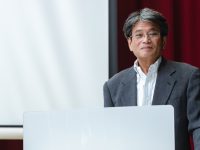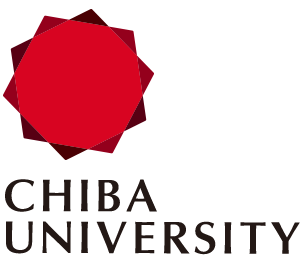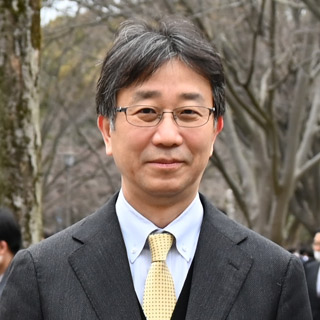Researchers reveal key limitations in existing techniques for massive connectivity in wireless networks, paving the way to better solutions
Grant-free communication schemes are a promising way to connect massive numbers of IoT devices, but they can suffer from interference and uneven performance. Researchers from Japan have made progress in addressing this challenge by developing a detailed mathematical model of how these schemes perform under various conditions. Their findings reveal a key trade-off between network fairness and optimal performance, offering insights for designing future 5G and 6G systems that support smart cities and connected healthcare.

Image title: Towards Massively Connected Smart Cities
Image caption: A key vision of 5G wireless networks is the interconnectivity of hundreds of thousands of devices per square kilometer, which requires significant advances in communication schemes to avoid data collisions and interference, while ensuring good performance. This study explores the advantages and fundamental limitations of a specific type of access scheme that Internet-of-Things devices would use to send and request data through the network.
Image credit: Flickr via Creative Commons Search Repository
Image source: https://openverse.org/image/9670994f-320d-49fc-88c0-0f0a90286932
Image license: CC BY-SA 2.0
Usage Restrictions: Credit must be given to the creator. Adaptations must be shared under the same terms.
Imagine a world where every smart device, from traffic sensors to wearable health monitors, can seamlessly communicate. This vision is at the heart of Massive Machine Type Communication (mMTC), a cornerstone of 5G and future 6G mobile networks. Simply put, mMTC aims to connect an unprecedented number of Internet of Things (IoT) devices—up to one million per square kilometer—allowing them to sporadically send small bursts of data. This capability is crucial for advancements in smart cities, autonomous vehicles, and remote healthcare, among many other applications.
A key approach to enabling this massive connectivity is through ‘grant-free’ communication schemes. Unlike traditional cellular communication, where devices must first request permission from a base station to transmit, grant-free schemes allow devices to send data without prior authorization. This simplifies the communication process, significantly reducing processing and power consumption in end devices and scheduling operations in base stations. However, grant-free schemes come with a significant drawback: the increased risk of data collisions when many devices transmit simultaneously, which can lead to network congestion and communication failures.
In an effort to tackle these critical challenges, a research team led by Professor Shigeo Shioda from the Graduate School of Informatics, Chiba University, Japan, has developed a comprehensive analytical model to evaluate the performance of grant-free communications schemes. Their paper, which was made available online on Computer Communications on April 22, 2025, and was published in Volume 238 of the journal on June 1, 2025, explores how a widely known grant-free method called ‘slotted ALOHA’ performs in a densely populated IoT environment. Other members of the team included Mr. Yuki, who is also from Chiba University, and Professor Takeshi Hirai from the Graduate School of Information Science and Technology, The University of Osaka.
Worth noting, this paper is an extended version of a study that received the Best Paper Award at ACM MSWiM 2023 (presented at The 26th International Conference on Modeling, Analysis, and Simulation of Wireless and Mobile Systems), an international conference in the field of performance modeling and evaluation of wireless communication systems, ranked as a Core Conference Rank A.
The team’s approach involved creating a sophisticated analytical model based on stochastic geometry, a mathematical tool for analyzing systems with randomly distributed elements. They assumed that both base stations and IoT devices are scattered across an area in a statistically random yet predictable manner. They then analyzed three different scenarios for slotted ALOHA: a basic version without any special enhancements, a version incorporating an interference cancellation technique called ‘NOMA,’ and a version employing power control, where devices can adjust their own signal strength. The team focused on two key performance indicators, namely the transmission success probability and base station throughput (how much data a base station can successfully receive in a given time frame).
Their findings revealed many complex dynamics for the different ALOHA versions. While interference cancellation improved base station throughput by up to 20% in some cases, it did not resolve what’s known as the ‘near-far problem.’ This is a phenomenon where devices closer to a base station have a much higher chance of successful transmission, while those further away struggle. Surprisingly, the study found that interference cancellation was most effective for devices at intermediate distances, not those very close or very far from the base station. On the other hand, while applying power control successfully addressed the near-far problem and ensured fairer transmission opportunities for all devices, it led to a substantial decrease in overall network performance.
“Our study reveals that ALOHA-based communications face an inherent trade-off between two conflicting objectives: fairness, in the sense that devices should have equal opportunities to communicate regardless of their distance from the base station, and throughput, the goal of enabling a single base station to receive data from as many devices as possible,” explains Prof. Shioda. “In other words, it is fundamentally difficult to achieve both fairness and maximum throughput simultaneously.” This highlights a critical design challenge for future IoT networks, suggesting that relying solely on grant-free schemes might not be feasible to achieve both optimal performance and equitable access.
Overall, the results of this study will help guide the development of IoT. Understanding the fundamental trade-offs in communication schemes is crucial for designing next-generation networks that are both efficient and fair. “We have shed light on the inherent limitations of IoT networks that will form the backbone of future IoT-driven societies. These limitations stem from the use of grant-free communication schemes and may potentially be overcome by adopting grant-based schemes. In future work, we intend to explore this possibility further,” concludes Prof. Shioda. Exciting applications in such societies include vehicle-to-everything communications, in which vehicles and road infrastructure exchange data, and remote medical care using wearable devices, where high communication reliability is essential for monitoring vital information. With any luck, this study’s insights will ultimately lead to more convenient and safer daily lives for everyone.
About Professor Shigeo Shioda from Chiba University, Japan
Dr. Shigeo Shioda is the Dean of the Graduate School of Informatics at Chiba University. He received his B.S. in physics from Waseda University in 1986 and his M.S. and Ph.D. in teletraffic engineering from The University of Tokyo. Formerly at NTT, his research spans teletraffic engineering, stochastic processes, and network optimization. He also explores social media analysis, localization, and Wi-Fi sensing. He has authored over 160 publications and received awards from ACM MSWiM, SNAMS, WPMC, and IEEE MASS, among others. Dr. Shioda is a member of IEICE, IEEE, ACM, and a fellow of the Operations Research Society of Japan.
Funding
This work was supported in part by JSPS KAKENHI (Grant Numbers JP22H01480 and JP23K16868) and by the Support Center for Advanced Telecommunications Technology Research (SCAT).
Reference:
Title of original paper: Modeling and performance analysis of slotted ALOHA with interference cancellation for mMTC
Authors: Yuki Ichimura1, Shigeo Shioda1, and Takeshi Hirai2
Affiliations: 1Chiba University, Japan
2The University of Osaka, Japan
Journal: Computer Communications
DOI: 10.1016/j.comcom.2025.108177
Contact: Shigeo Shioda
Graduate School of Informatics, Chiba University
Email: shioda@faculty.chiba-u.jp
Contact: Takeshi Hirai
Graduate School of Information Science and Technology, The University of Osaka
Email: t-hirai@ist.osaka-u.ac.jp
Academic Research & Innovation Management Organization (IMO), Chiba University
Address: 1-33 Yayoi, Inage, Chiba 263-8522, Japan
Email: cn-info@chiba-u.jp
General Affairs Section, Graduate School of Information Science and Technology, The University of Osaka
Address: 1-5 Yamadaoka, Suita, Osaka 565-0871, Japan
Email: jyouhou-syomu@office.osaka-u.ac.jp
Recommend
-

Live on the Moon, Settle on Mars: Research Center for Space Agriculture and Horticulture for Space Food Production and Supply
2023.10.20
-

Fostering Inclusive Education for the Gifted and All: Unlocking Northern European Insights for Special Needs Learners
2023.06.16
-
-200x150.jpg)
Research is a Role-Playing Game-Innovation in Drug Discovery Stems from the Ability to Think Deeply
2022.11.07






